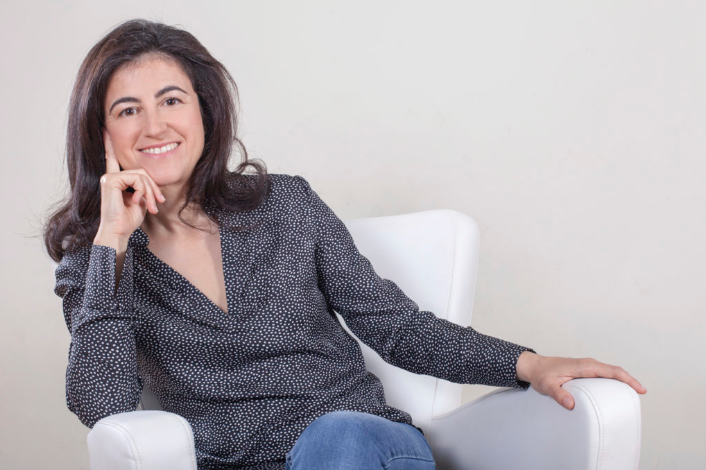«IMDEA Materials has provided a unique opportunity both to mature as a scientist as well as to contribute to the creation and growth of a research institute in Spain»
Dr. Pérez-Prado was born in Asturias, Spain. She completed an MSc in Physics at the Complutense University in Madrid (UCM) in 1994. After a brief stay at Chemnitz University, Germany, she joined the National Center for Metals Research (CENIM, CSIC) in Madrid, Spain, where she carried out her dissertation on the Study of the Deformation Mechanisms of Superplastic Aluminum Alloys by Texture Analysis. In 1998 she got a PhD degree in Physics from UCM and she then joined the University of California in San Diego (UCSD) as a Postgraduate Research Engineer and was also hired as a consultant at Oregon State University. In 2001 Dr. Pérez-Prado returned to CENIM, Madrid, where she worked as a Ramón y Cajal fellow on the processing and physical metallurgy of novel Mg alloys for light transportation. She was granted a Tenured Scientist position in 2004 and in 2008 she joined IMDEA Materials as Senior Researcher. She currently performs research in applied and fundamental work on the processing, characterization and mechanical behavior of advanced metallic materials for automotive, energy and biomedical applications. Dr. Teresa Pérez Prado is a member of the Board of SOCIEMAT and last June, she was appointed as new Deputy Director of IMDEA Materials Institute.

Teresa, can you tell us about your background and research interests?
For the past 23 years I have carried out applied and fundamental work on the processing, characterization and mechanical behavior of advanced metallic materials for light transport, energy and biomedical applications. At IMDEA Materials Institute I lead the Physical Metallurgy research group, which is currently focusing on the design of “smart ink” metal powders for 3D printing, new high temperature TiAl alloys for plane turbines, light Mg alloys, and high throughput strategies to accelerate materials´ discovery.
You have been a member of IMDEA Materials Institute since its very beginning. What led you to join the Institute when it was created?
In 2004 I got a tenured scientist position at the Spanish National Research Council (CENIM-CSIC) and by 2007 I was looking for new opportunities to grow. I decided to take a one-year leave to join an MBA program at INSEAD (Fontainebleau, France), where I truly enjoyed participating in several projects at the interface between science and business. Over the course of that year I was excited to learn about the IMDEA project, whose core values I shared fully. I joined as staff member #6. IMDEA Materials has provided a unique opportunity both to mature as a scientist as well as to contribute to the creation and growth of a research institute in Spain.
How has been your experience as a researcher at IMDEA Materials Institute?
As a young scientist, my dream was to lead a research group. IMDEA Materials constituted a fantastic environment to carry out this ambition, providing administrative and project management support, start-up funds to hire the first group members and to build a lab and, most importantly, intellectual freedom and a team of inspiring colleagues with complementary expertise with whom it has been a pleasure to collaborate over the years.
Last June you were appointed as Deputy Director of IMDEA Materials Institute. What are the main tasks associated to your new position?
In my current role I assist the Director and contribute, together with the Steering Committee, to define the strategy of the institute. We are supported in this task by the Scientific Council and by the Board of Trustees. Having spent almost 10 years as researcher myself, I aspire to facilitate communication of staff needs to the different governing bodies.
Can you tell us about your vision for the future of IMDEA Materials Institute?
IMDEA Materials was born at a time where Spain was going through a period of severe economic difficulties and was nevertheless able to thrive. With a staff of more than 100 people, it has now reached a state of maturity that requires the definition of new avenues for growth so that it can continue to fulfill its core mission: to promote excellence in research and technology transfer to industry, as well as to attract talented researchers and provide them a fertile environment for career development.
You are also member of the Board of SOCIEMAT, the Materials Spanish Association, which disseminates the activities carried out by Spanish research groups and universities within the area of Materials Science and Technology. In order to end this interview from an educational point of view, what can you tell us about your role within SOCIEMAT and how do you envision that this association can help the future generation of materials scientists?
SOCIEMAT promotes several educational activities, such as the Materials Summer School, hosts awards for young talents, and organizes the National Materials´ Conference, held every 2 years. It also seeks to bridge the gap between industry and new graduates by promoting job vacancies and matching them with the right profiles. Finally, SOCIEMAT has gathered an extended network of academic centers and companies that constitute a fertile ground where future materials´ scientists and engineers can develop fulfilling careers.
